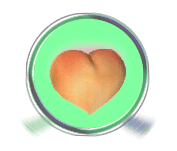Dangers of abusive spanking
Physical dangers
- Bruises
Bruises, welts, swellings and hematoma are typical results of spanking with an implement. They are actually injuries of the skin and therefore not acceptable for "spanking with love". Bruises will usually last (and be painful, particularly when the child sits down) for several days. They can be visible for as long as one or two weeks after the spanking.
Safeguard: Never use any implement for spanking. Spank only with your hand.
- Fat embolism
Spanking the buttocks with an implement can not only cause bruises, but also loosen fat globules into the bloodstream. If spankings are given excessively (hard and frequently), there is a serious risk for these fat globules to block vessels in the lungs or the brains. Such an embolism can be fatal.
Safeguard: Never spank your child too frequently or too hard. Don't use implements. Seek professional help if you notice you have difficulty keeping your temper and tend towards abusive spanking.
- Coccyx injury
Hitting the coccyx (tailbone) is very dangerous. The risk of a coccyx fracture is especially great when a non-flexible implement, such as a wooden paddle, is used for spanking.
Safeguard: Never spank the buttocks too high (see figure 4 in Spanking techniques). Don't use implements for spanking - in particular, don't use hard or heavy ones (see Spanking implements). Don't use positions that pose a risk to unintentionally hit the coccyx (see Spanking positions).
Emotional dangers
- Decreased self-esteem
Spanked children may feel unloved by their parents. They may get the feeling they just can't cope with the high parental expectations, and become shy and withdrawn. Such a child's depression can go unnoticed for a long time. Poor school performance (due to concentration problems, for example) is often the first indicator for parents that something is wrong with their "good, well-behaved" child.
Safeguard: Praise and hug your child a lot for good behavior. Let him/her feel how much he/she is loved. When you need to scold him/her, follow the principle "love the sinner, hate the sin." Instead of saying "you are bad", put it in the words "this behavior is unacceptable" or similar. Always tell your child that he/she is loved and accepted, even when he/she does things that need correction. Consider the use of non-corporal punishments instead of spankings, they may work better for your child.
- Increased aggression
The opposite can also occur. A spanked child may begin to heap up negative emotions. This can result in angry outbursts, temper tantrums, and other aggressive behavior. Such a child is likely to start bullying siblings and classmates, in particular weaker and younger ones.
- This can be the beginning of a vicious circle. A child is spanked for
bad
behavior, shows only some temporary improvement, soon acts worse, and gets
spanked for that again. Over time, the parents lose control, and the child
becomes emotionally deranged.
Safeguard: Establish a deep, trustful parent-child relationship. Give your child lots of praise and hugs for good behavior. To correct bad behavior, try non-corporal punishments. If you still feel the need to give a spanking, do it non-aggressively. Never spank in a fit of temper. Before any punishment, talk calmly with your child about what he/she did. Display sadness about the behavior, not anger. If you feel the need for a severer punishment, instead of increasing the pain, try emphasizing the ritual.
- Sexual deviation
This topic is debated heatedly. According to traditional psychology, there is a cause-effect relationship between traumatic childhood events and adult sexual deviation. In other words, spanking a child too much or too hard can turn him or her into a spanking fetishist, a bondage/domination/submission fan, a sadist, or masochist when he or she grows up. The underlying theory (link broken) is that a sexually undeveloped child can work up a painful, traumatic experience by "eroticising" it.
On the other hand, many spanking fetishists say they were never spanked as children, nor did they witness spankings of other children. For that reason it seems reasonable to assume other, unknown causes. A nature/nurture coalition may offer the most likely basis of an explanation.
Safeguard: If the theory is correct, the tendency to eroticise a traumatic experience is the higher the younger the child is. Spanking a child under the age of 3 must therefore be considered potentially dangerous. It is recommended to never give a child under 3 years more than one single swat on the rear.
However, it is important to note that the danger lies not in the spanking itself, but in the trauma. For that reason, the best way to keep the risk of sexual deviation low is to prevent trauma. A spanking given by a calm, controlled parent with lots of love and care is much less likely to cause a trauma than a spanking given by a furious, uncontrolled parent.
- Drug and alcohol abuse
People who were physically abused as children have an increased risk of drug and alcohol abuse as adults. They are also more likely to suffer from emotional problems (depression, aggression), to have a poor impulse control, and to abuse their own children when they become parents.
Safeguard: Spank only nonabusively as recommended by this website. If you notice you tend towards physical child abuse, seek professional help as soon as possible.
Last update: May-23-2003
